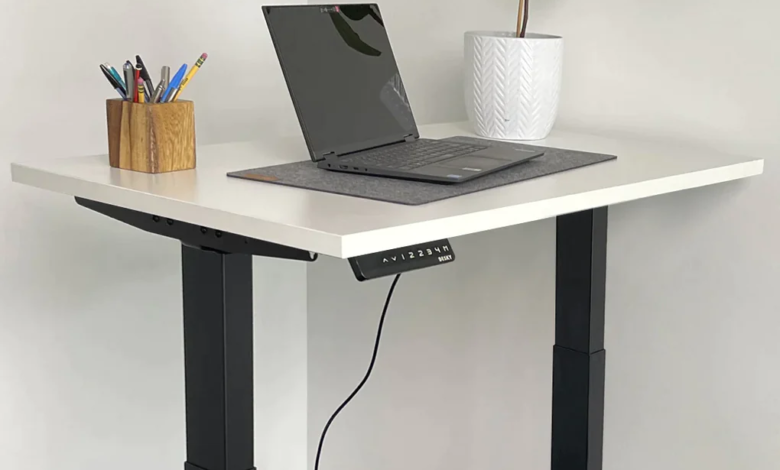Busting Myths: Dispelling Misconceptions About Standing Desks

In the ever-evolving landscape of office ergonomics, standing desks have garnered significant attention as a potential solution to the health hazards of prolonged sitting. However, with this surge in popularity, a cloud of misconceptions has also emerged, clouding the understanding of their benefits and drawbacks. In this post, we’ll shed light on some common misconceptions surrounding standing desks and set the record straight.
Misconception 1: Standing All Day is the Only Way
Reality: One of the most prevalent myths is that a standing desk require constant standing to be effective. In truth, the key lies in balance and movement.
Fact: Prolonged standing can lead to its own set of health issues, including fatigue and discomfort. The real aim is to strike a balance between sitting and standing, incorporating regular movement breaks to prevent strain and promote circulation.
Misconception 2: Standing Desks Guarantee Weight Loss
Reality: While standing does burn more calories than sitting, it’s not a guaranteed path to weight loss.
Fact: Standing alone is not a substitute for a comprehensive approach to weight management. Combining a standing desk with a healthy lifestyle, including regular exercise and a balanced diet, is the way to achieve sustainable weight loss.
Misconception 3: Standing Desks Eliminate the Need for Exercise
Reality: Standing desks offer health benefits, but they don’t replace the need for dedicated exercise.
Fact: While standing increases energy expenditure, it does not provide the same cardiovascular, muscular, and metabolic benefits as intentional exercise. Incorporating regular physical activity remains essential for overall well-being.
Misconception 4: Standing Desks Automatically Improve Posture
Reality: Standing desks can facilitate better posture, but proper alignment requires conscious effort.
Fact: Simply standing does not guarantee good posture. Users must be mindful of their body alignment, engage core muscles, and make ergonomic adjustments to ensure proper posture while standing.
Misconception 5: Standing Desks are a Universal Solution
Reality: Standing desks may not be suitable for everyone and may not address all health concerns.
Fact: Health conditions, comfort preferences, and work tasks vary among individuals. While standing desks offer benefits, they might not be the ideal solution for everyone, and other ergonomic considerations may be necessary.
Misconception 6: Standing Desks are Expensive
Reality: While some standing desks can be pricey, there are affordable options available.
Fact: Standing desks come in a range of price points. From budget-friendly models to high-end versions, there are options that cater to different budgets and preferences.
Misconception 7: Standing Desks Guarantee Increased Productivity
Reality: While some individuals experience improved focus and productivity with standing desks, it’s not a guarantee for everyone.
Fact: Productivity gains from standing desks depend on various factors, including individual preferences and work tasks. Some users may benefit more from the increased energy and alertness, while others may find it distracting.
Conclusion: Separating Fact from Fiction
Standing desks hold significant potential for promoting better health and well-being in the modern workplace. However, it’s crucial to separate fact from fiction and approach their use with a well-informed perspective. By debunking these common misconceptions, you can make a more educated decision about incorporating a standing desk into your workspace. Remember that the key to reaping the benefits lies in a balanced approach that combines proper posture, movement, and overall healthy habits.



